Phil Collins Piano Songs: A Guide to His Best Works

Introduction
Phil Collins is a well-known musician who has left a significant mark in the music industry. He is a singer, songwriter, instrumentalist, and record producer, among other roles. One of his greatest strengths is his ability to play the piano, which he has demonstrated in many of his songs. In this article, we will explore some of Phil Collins’ best piano songs.Against All Odds (Take a Look at Me Now)

“Against All Odds” is a song by Phil Collins that was released in 1984. It is a ballad that features the piano prominently, with Collins’ voice providing a perfect complement to the instrument. The song was a huge commercial success and reached the top of the charts in the US and UK. It is widely regarded as one of Collins’ best works.
Another Day in Paradise

“Another Day in Paradise” is a song that was released in 1989. It features a beautiful piano melody that is instantly recognizable. The song is about the issue of homelessness and has a deeply emotional message. The piano in this song perfectly captures the mood and adds to the overall impact of the song.
You’ll Be in My Heart

“You’ll Be in My Heart” is a song that was written by Phil Collins for the Disney movie Tarzan. It is a beautiful ballad that features a simple piano melody that is both soothing and uplifting. The song won an Academy Award for Best Original Song and is a fan favorite.
One More Night

“One More Night” is a song that was released in 1984. It features a slow and steady piano melody that is both calming and romantic. The song is about a man who is trying to win back the love of his life and the piano adds to the overall romantic feel of the song.
In the Air Tonight

“In the Air Tonight” is a song that was released in 1981. It is a powerful and intense song that features a famous drum solo. However, the piano is also an important element in this song, providing a haunting melody that adds to the overall impact of the song.
Easy Lover

“Easy Lover” is a song that was released in 1984. It features a catchy piano riff that is instantly recognizable. The song is an upbeat and fun song that showcases Collins’ piano skills. The piano adds to the overall energy of the song and makes it a fan favorite.
Separate Lives

“Separate Lives” is a song that was released in 1985. It is a duet between Phil Collins and Marilyn Martin and features a beautiful piano melody. The song is about a couple who are struggling with their relationship and the piano adds to the overall emotional impact of the song.
Take Me Home

“Take Me Home” is a song that was released in 1985. It features a driving piano melody that adds to the overall energy of the song. The song is about a man who is homesick and wants to return to his loved ones. The piano perfectly captures the emotion of the song and makes it a fan favorite.
Can’t Stop Loving You

“Can’t Stop Loving You” is a song that was released in 2002. It features a simple piano melody that perfectly complements Collins’ voice. The song is about a man who is struggling with his feelings for someone and the piano adds to the overall emotional impact of the song.
Against All Odds (Piano Version)

“Against All Odds” was a huge commercial success when it was released in 1984. However, there is a lesser-known piano version of the song that is equally beautiful. The piano in this version takes center stage and adds to the overall emotional impact of the song.
I Don’t Care Anymore

“I Don’t Care Anymore” is a song that was released in 1982. It features a driving piano melody that perfectly captures the angst and frustration of the song. The piano adds to the overall energy of the song and makes it a fan favorite.
Do You Remember?

“Do You Remember?” is a song that was released in 1990. It features a beautiful piano melody that is both soothing and melancholic. The song is about a man who is reminiscing about his past and the piano adds to the overall emotional impact of the song.
Easy Way Out

“Easy Way Out” is a song that was released in 1996. It features a driving piano melody that perfectly complements the overall energy of the song. The piano adds to the overall intensity of the song and makes it a fan favorite.
Everyday

“Everyday” is a song that was released in 1993. It features a simple piano melody that perfectly complements the overall mood of the song. The song is about a man who is trying to make sense of his feelings and the piano adds to the overall emotional impact of the song.
Both Sides of the Story
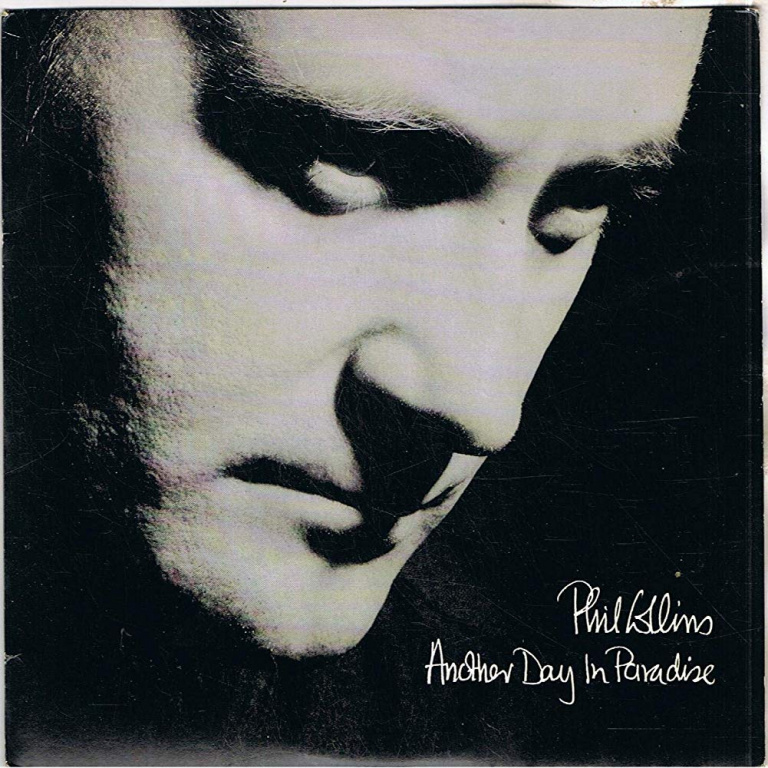
“Both Sides of the Story” is a song that was released in 1993. It features a driving piano melody that perfectly complements the overall energy of the song. The song is about a man who is trying to see both sides of a situation and the piano adds to the overall intensity of the song.
We Wait and We Wonder
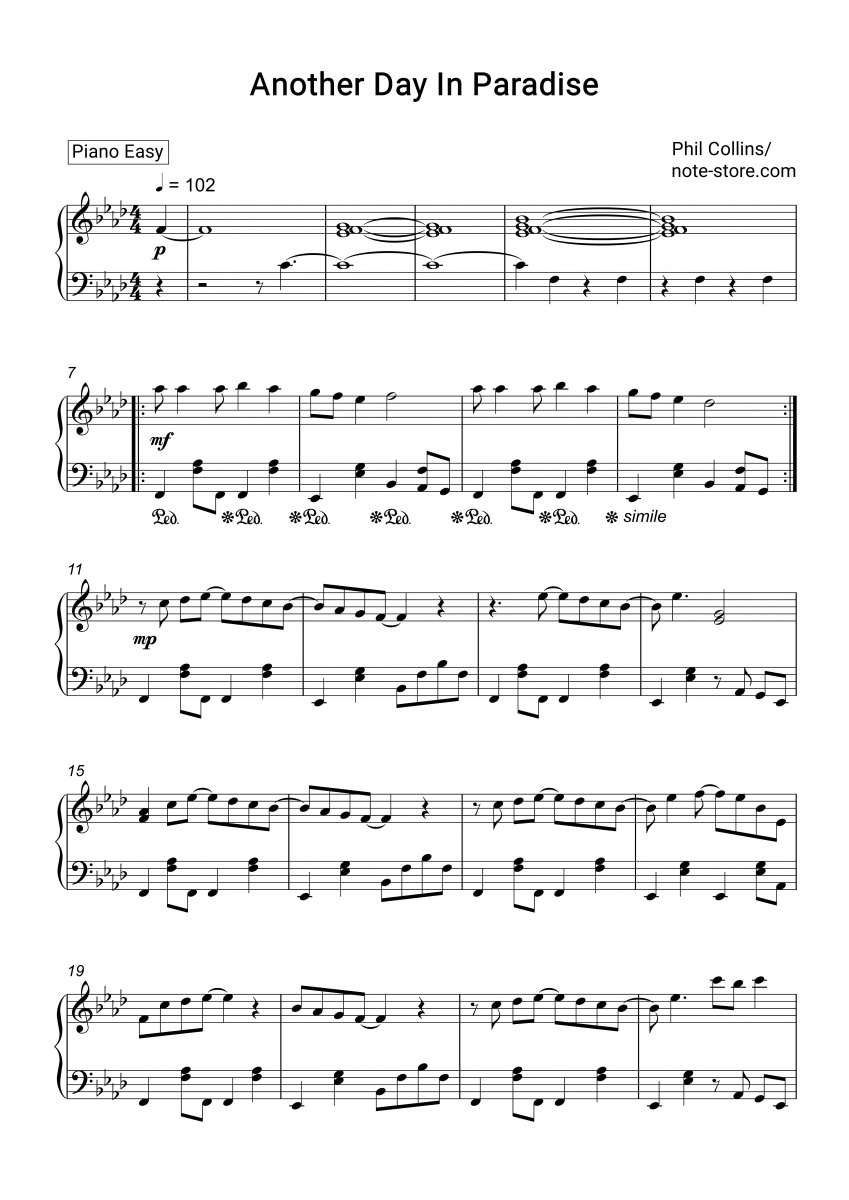
“We Wait and We Wonder” is a song that was released in 1993. It features a haunting piano melody that perfectly captures the mood of the song. The song is about a man who is questioning the world around him and the piano adds to the overall emotional impact of the song.
Something Happened on the Way to Heaven

“Something Happened on the Way to Heaven” is a song that was released in 1989. It features a driving piano melody that perfectly complements the overall energy of the song. The piano adds to the overall intensity of the song and makes it a fan favorite.
Conclusion
Phil Collins is a talented musician who has left a significant mark in the music industry. His ability to play the piano is one of his greatest strengths and he has demonstrated it in many of his songs. Some of his best piano songs include “Against All Odds,” “Another Day in Paradise,” and “You’ll Be in My Heart.” Whether you’re a fan of ballads, rock songs, or pop music, there’s a Phil Collins piano song for everyone.
Related video of Phil Collins Piano Songs: A Guide to His Best Works
Phil Collins I Can Feel It Coming
Introduction
Phil Collins is an English singer, songwriter, and musician who has sold over 150 million records worldwide. One of his hit songs is "I Can Feel It Coming," which was released in 2016. The song has gained widespread popularity and is still played on various radio stations across the world.
The Composition and Lyrics of "I Can Feel It Coming"

"I Can Feel It Coming" is a song that was written and composed by Phil Collins and his longtime collaborator, Daryl Stuermer. The song has a catchy melody and a smooth rhythm that make it easy to dance to. The lyrics are romantic, reflecting the feeling of being in love and the anticipation of a relationship.
The Success of "I Can Feel It Coming"

"I Can Feel It Coming" was a commercial success, reaching the top ten in several countries, including the United Kingdom, Canada, and the United States. The song was also certified platinum in several countries, including the United States, Canada, and the United Kingdom.
The Music Video of "I Can Feel It Coming"

The music video of "I Can Feel It Coming" was directed by Warren Fu and features Phil Collins and a woman walking through a desolate landscape. The video has a retro feel, with Phil Collins sporting a 1980s hairstyle and outfit. The video has received over 550 million views on YouTube as of 2021.
The Legacy of Phil Collins

Phil Collins's music has left a lasting impact on the music industry. He has won numerous awards, including seven Grammy Awards, and has been inducted into the Rock and Roll Hall of Fame as both a solo artist and a member of the band Genesis. His songs continue to be played on various radio stations and are still loved by millions of fans worldwide.
Conclusion
"I Can Feel It Coming" is a classic Phil Collins song that has stood the test of time. Its catchy melody, smooth rhythm, and romantic lyrics have made it a fan favorite. Phil Collins's music continues to inspire a new generation of musicians and will undoubtedly be enjoyed for many years to come.
Related video of Phil Collins I Can Feel It Coming
PGD2 Inhibitor Hair Loss: The Secret to Stopping Hair Loss?
Introduction
Hair loss is a common problem for both men and women. Losing hair can be quite distressing, especially when it happens at a young age. Although there are many treatments available for hair loss, most of them are not effective. However, recent studies have found that PGD2 inhibitor hair loss treatment could be the answer to all your hair loss problems.
What is PGD2?
PGD2 is a prostaglandin that is produced in the body. It is responsible for many physiological processes, including inflammation, immune response, and blood pressure regulation. Recent studies have found that PGD2 is also involved in hair growth regulation.

How Does PGD2 Cause Hair Loss?
Studies have found that PGD2 inhibits hair growth by reducing the size of hair follicles. This causes hair to become thinner and weaker, leading to hair loss. In addition, PGD2 also triggers an inflammatory response in the scalp, which further contributes to hair loss.

What are PGD2 Inhibitors?
PGD2 inhibitors are compounds that block the action of PGD2. These compounds have been found to promote hair growth by increasing the size of hair follicles and reducing inflammation in the scalp.
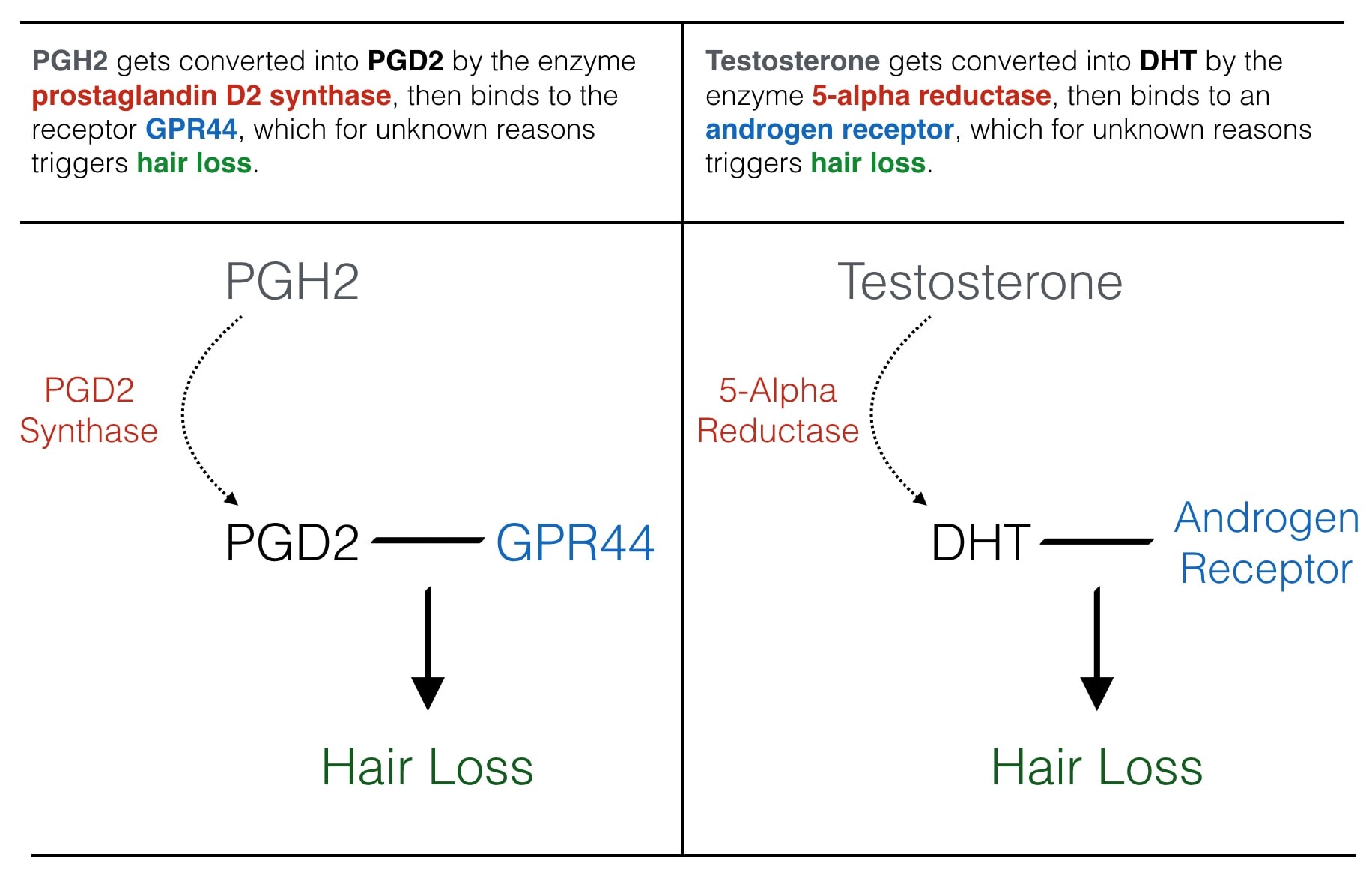
What are the Benefits of Using PGD2 Inhibitors for Hair Loss?
PGD2 inhibitors have been found to be a safe and effective treatment for hair loss. They have been shown to promote hair growth, increase hair density, and improve hair quality. In addition, they have minimal side effects and are well-tolerated by most people.
What are the Different Types of PGD2 Inhibitors?
There are many different types of PGD2 inhibitors available, including natural compounds and synthetic drugs. Some of the most common PGD2 inhibitors include aspirin, ibuprofen, and naproxen. In addition, there are also many natural compounds that have been found to be effective PGD2 inhibitors, such as green tea extract and resveratrol.
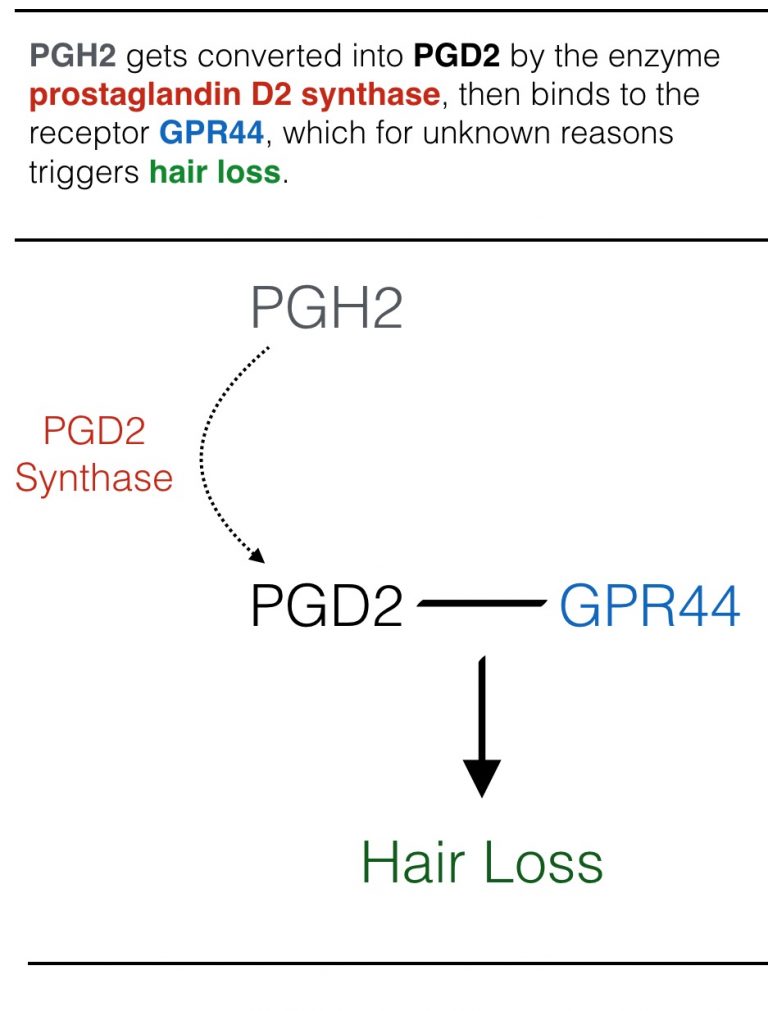
How to Use PGD2 Inhibitors for Hair Loss?
PGD2 inhibitors can be used in a variety of ways to treat hair loss. Some people prefer to take oral supplements that contain PGD2 inhibitors, while others prefer to apply topical solutions directly to the scalp. In addition, there are also many shampoos and conditioners that contain PGD2 inhibitors, which can be used to promote hair growth and reduce inflammation in the scalp.
What are the Side Effects of Using PGD2 Inhibitors?
PGD2 inhibitors have minimal side effects and are generally well-tolerated by most people. However, some people may experience mild side effects, such as gastrointestinal upset, headache, or dizziness. In addition, some people may be allergic to PGD2 inhibitors, so it is important to speak with a healthcare provider before using any new treatment.

Conclusion
PGD2 inhibitor hair loss treatment is a safe and effective way to promote hair growth and reduce hair loss. By blocking the action of PGD2, these compounds can increase the size of hair follicles and reduce inflammation in the scalp, leading to thicker, stronger, and healthier hair. Whether you choose to take oral supplements, use topical solutions, or use shampoos and conditioners that contain PGD2 inhibitors, this treatment could be the key to stopping hair loss and promoting hair growth.
Related video of PGD2 Inhibitor Hair Loss: The Secret to Stopping Hair Loss?
Perth Street Names Origins
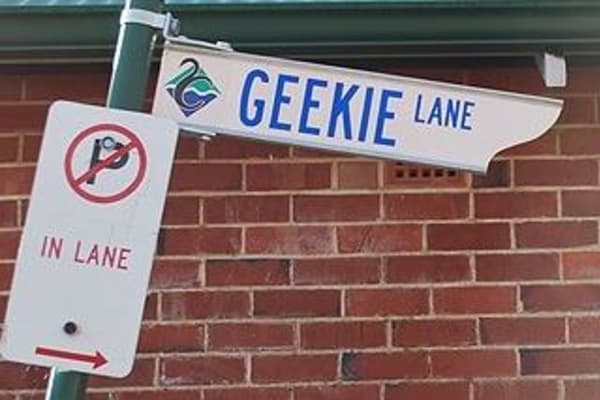
Perth is the capital city of Western Australia and is known for its stunning natural beauty, rich history, and diverse culture. One of the unique features of Perth is its street names, many of which have fascinating origins that reflect the city's history and heritage. In this article, we'll explore the origins of some of Perth's most well-known street names.
St Georges Terrace

St Georges Terrace is one of the most famous streets in Perth and is home to many of the city's most important buildings, including the Western Australian Parliament and the Supreme Court. The street was named after St George's Cathedral, which was built in the 1880s and is located at the eastern end of the street. The cathedral is dedicated to St George, who is the patron saint of England and is depicted slaying a dragon on the cathedral's coat of arms.
Hay Street

Hay Street is one of the oldest streets in Perth and was named after Robert William Hay, who was the Under-Secretary of State for the Colonies in the 1830s. Hay Street was once the centre of Perth's red-light district and is still home to many of the city's adult entertainment venues.
Murray Street

Murray Street is named after Sir George Murray, who was the Secretary of State for War and the Colonies in the 1820s. Murray Street is home to many of Perth's high-end fashion boutiques and is a popular shopping destination for both locals and tourists.
William Street

William Street is named after King William IV, who was the King of England from 1830 to 1837. The street is located in the heart of Perth's central business district and is home to many of the city's shops, restaurants, and cafes.
Barrack Street

Barrack Street is named after the military barracks that were once located on the street. The barracks were built in the early 19th century to house soldiers who were stationed in Perth to protect the colony from potential threats.
Adelaide Terrace

Adelaide Terrace is named after Queen Adelaide, who was the wife of King William IV. The street is located on the northern bank of the Swan River and is home to many of Perth's luxury hotels and apartment buildings.
Mounts Bay Road

Mounts Bay Road is named after Mounts Bay, which is located on the western side of the city. The road runs along the southern bank of the Swan River and is home to many of Perth's most prestigious residential buildings.
Wellington Street

Wellington Street is named after the Duke of Wellington, who was a British military leader and politician in the early 19th century. The street is located in the heart of Perth's central business district and is home to many of the city's government buildings and public transport hubs.
Beaufort Street

Beaufort Street is named after the Duke of Beaufort, who was a British peer in the 19th century. The street is located in the inner northern suburbs of Perth and is known for its trendy cafes, bars, and restaurants.
Meta Description:
Discover the origins of Perth's street names with this article. Learn about the fascinating history and heritage behind some of the city's most well-known streets.
Meta Keywords:
Perth, street names, origins, history, heritage, St Georges Terrace, Hay Street, Murray Street, William Street, Barrack Street, Adelaide Terrace, Mounts Bay Road, Wellington Street, Beaufort Street.
Related video of Perth Street Names Origins
Percentage Getting Pregnant Pulling Out

Introduction
Many couples rely on the withdrawal or pulling out method as a form of contraception. This method involves the male partner withdrawing his penis from the vagina before ejaculation, with the aim of preventing sperm from entering the female's reproductive system. However, there is still a possibility of pregnancy even with this method. In this article, we will discuss the percentage of getting pregnant pulling out.
How Effective is the Pulling Out Method?

The pulling out method is not considered to be a reliable form of contraception. It is estimated that around 22 out of 100 women who use this method will become pregnant within a year. This percentage can be higher if the method is not used correctly. The risk of pregnancy increases if the male partner does not withdraw in time or if he ejaculates near the vaginal opening.
Factors Affecting the Percentage of Getting Pregnant Pulling Out
There are several factors that can affect the percentage of getting pregnant pulling out. These include:
- The timing of withdrawal: If the male partner withdraws too late, there is a higher risk of pregnancy. This is because pre-ejaculate fluid can contain sperm, which can fertilize the egg.
- The consistency of use: If the pulling out method is not used consistently, there is a higher risk of pregnancy. This can happen if the couple forgets to use the method or if they choose to have unprotected sex.
- The male partner's ability to withdraw: If the male partner is unable to withdraw in time or if he ejaculates near the vaginal opening, there is a higher risk of pregnancy.
- The woman's fertility: The percentage of getting pregnant pulling out can vary depending on the woman's fertility. Women who are highly fertile are more likely to become pregnant even with this method.
How to Increase the Effectiveness of the Pulling Out Method

While the pulling out method is not considered to be a reliable form of contraception, there are some things that couples can do to increase its effectiveness. These include:
- Using the method consistently: The pulling out method should be used every time the couple has sex.
- Communicating with each other: The couple should communicate with each other to ensure that the method is being used correctly.
- Using additional forms of contraception: The pulling out method can be used in conjunction with other forms of contraception, such as condoms or birth control pills, to increase its effectiveness.
Conclusion
The percentage of getting pregnant pulling out can vary depending on several factors, including the timing of withdrawal, the consistency of use, the male partner's ability to withdraw, and the woman's fertility. While the pulling out method is not considered to be a reliable form of contraception, couples can increase its effectiveness by using it consistently, communicating with each other, and using additional forms of contraception.